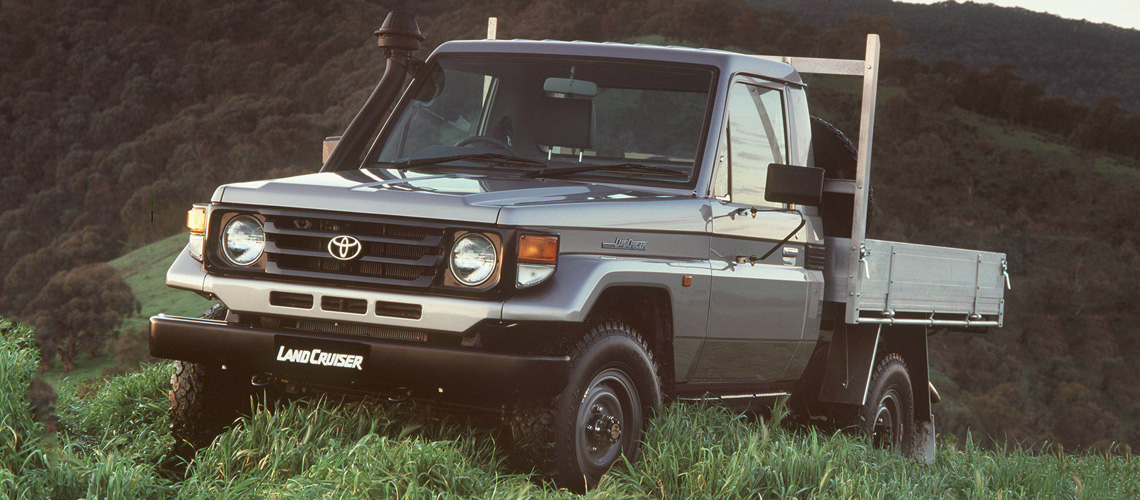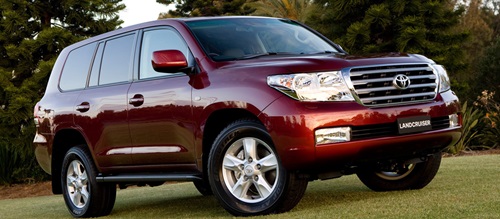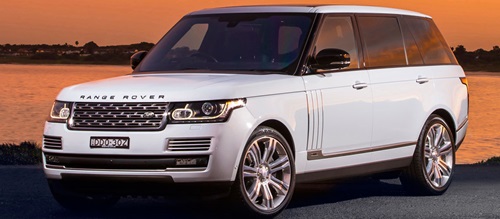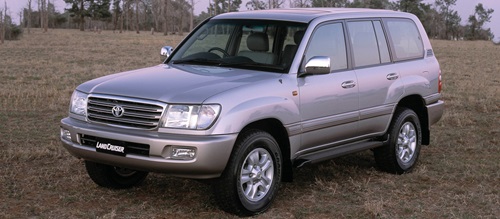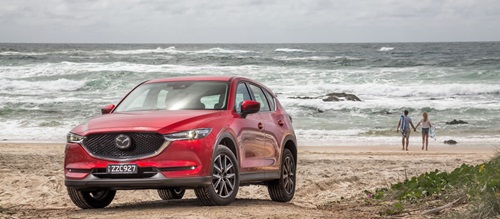Specifications |
|
| Priced from | $45,100 |
| Engine | 4.2 L |
| Transmission | Manual |
| Fuel Economy |
12.2 L/ 100KM
GOOD
|
| Output | 96Kw @3800 rpm 285 Nm @2200 rpm |
| ANCAP rating |
Not Tested |
The Snowy Mountains Hydroelectric Scheme is the single most significant event to shape the reputation of Toyota's LandCruiser four-wheel drive vehicles in Australia's off-road conditions. The launch of the more utilitarian 1999 models of the LandCruiser range, the 78 Series, was timed to coincide with the Snowy's fiftieth anniversary, due to the outstanding part the original 25 Series vehicles played in its construction over fifty years ago.
Toyota claims to have addressed many of its customer comments in the 78 Series. After surveying owners of 75 Series vehicles, it was requested that reliability, split wheel rims, vinyl interior and seats, quarter vent windows and rugged style be retained. However, improvements were requested in safety, battery capacity, ride comfort, cabin space and comfort, payload capacity, driver's seat travel, wheel articulation and brake performance. Differential locks, snorkels, winches and air conditioning should be retained as optional equipment.
The 78 Series LandCruiser is designed as a workhorse for the country and construction fraternities where rugged off-road driving is part of everyday life. It is not surprising therefore, that there are ten variations available. Models consist of a petrol and diesel engined cab-chassis, a diesel single cab pick-up utility, a three, six and eleven-seat TroopCarrier in petrol or diesel and a diesel six seat RV TroopCarrier. All variants have manual transmission and are powered by the 1FZ-FE, 4.5 litre, six-cylinder petrol or the 1HZ, 4.2 litre, six-cylinder diesel engine.
Pricing begins at $45,100 for the petrol cab-chassis and peaks at $52,710 for the diesel RV TroopCarrier, as tested.
Features and equipment
The 4.5 litre, DOHC, 24 valve, petrol engine is the tried and proven unit introduced into the 80 Series wagons in the early nineties and the current upgraded engine is the same as that used in the 100 Series wagons. Increased power and torque plus a reduction in noise levels have been achieved without sacrificing fuel economy.
The 4.2 litre, SOHC 12-valve diesel engine has also undergone improvements to provide a cleaner, more powerful and economical combustion ignition powerplant. Although the opposition provides a turbocharged 4.2 diesel engine option in its workhorse range, Toyota has no immediate plans to follow suit.
The five-speed manual transmission is a direct import from the 100 Series wagon, featuring triple-cone synchronisers and a power take-off facility for driving accessories, such as pumps and winches.
A limited slip differential is now standard equipment fitted to the rear axle only, while the optional diff locks can be fitted to both or one axle as required. The sixteen-inch steel split-rim wheels are a popular feature on these basic model vehicles, making it easier to carry out tyre repairs and replacements in out-of-the-way places with greater ease than the normal one-piece wheel rims.
By popular request, the front suspension has gained the coil set-up as used in the current wagon series, and the rear leaf springs have been increased in length.
The 78 Series now has disc brakes fitted to the rear, making it a full disc system, and the front brakes have been increased in size by adopting the 100 Series components.
Only basic safety features have been built into the 78 Series vehicles, including side impact beams, energy absorbing steering column and a more rigid cabin construction.
Although a fairly low priority with this type of vehicle, security has been increased featuring lockable fuel access, glovebox and spare wheel access, plus central locking.
Body and finish
Externally, there is little to identify the 78 Series. However, the keen eye may pick the new grille and front light assemblies, plus the increase in wheelbase and tray length. There has also been a reduction in separate body panels due to more sections being welded to add to the cabin's overall strength.
The square angular style of the previous model has been retained throughout the 78 Series, a feature that extends from the exterior, including the mirrors, to the interior, where the dash, instrument panel and internal fittings follow suit, giving it a dated appearance.
Comfort and space
Although the 78 Series has improved in many of its comfort areas, its design criteria is centred around load carrying and as such, it is still a fairly hard riding vehicle, particularly when empty.
Considerable effort has been expended on improving driver and front seat comfort, with longer seat cushions, increased legroom, improved padding and additional lumbar support. Although the front passenger seat will occupy two people, the centre position is not very comfortable, has only a lap safety belt and is suitable only for a slim person over short distances.
The rear seat is very bench-like, however it will allow three adults to travel in reasonable comfort. The front passenger seat can be moved forward and swivels with a one-lever action, to allow access to the rear seat.
Although air conditioning is a Toyota option, previous owners have requested the front quarter windows be retained to allow good airflow in vehicles that are not afforded that luxury.
The vehicle's interior is quite Spartan and although the roof is padded, the cross braces are exposed. Vinyl floor coverings resist dirt and spill absorption and make cleaning a simpler task.
A small centre dash pocket, large glovebox and pockets in both front door trims provide the basic cabin storage requirements. Luggage or payload space behind the rear seat is very generous and can be increased by removing or folding the rear seat. However, some tie-down provision would be handy.
Behind the wheel
The high driving position offers the operator an excellent view of the road ahead, giving a sense of command over the immediate and surrounding area. One thing that has improved greatly over the years, is the lightness and ease of operating the vehicle's controls. With the adoption of engine speed sensitive power steering as standard equipment, light clutch and gear lever operation, four wheel power assisted disc brakes and instruments and controls that are sensibly placed, the 78 Series is very easy and car-like to operate.
On the road
The very nature of the TroopCarrier dictates the way in which it handles and performs. Its high centre of gravity, heavy-duty suspension, narrow wheels and tyres, all work against its ride and handling ability. In spite of this handicap, it does perform quite well for a vehicle of this type.
The 4.2 diesel engine requires only a few short seconds of heating before starting effortlessly from cold and I would consider it to be the quietest and smoothest of any of the light vehicle diesel engines on the market. Acceleration from a standing start is smooth and effortless with first gear required only to start it rolling, and in many cases second can be used for take-off. Low speed torque is a feature of this vehicle, making it an excellent unit for tradespeople and landowners alike. The lower gear ratios ensure the acceleration times are slower than the 100 Series wagon, however, the addition of a 500 kg payload made only a marginal difference in the acceleration times for the overtaking and 0-80 km/h test manoeuvres.
The transmission is a delight to use and its ratios are ideally matched to the engine's performance. Although cruising at speeds of 110 km/h or more is not a problem, it is happiest at around 100 km/h on the open road.
The four-wheel disc brakes are certainly an improvement over the previous system, however, it could do with more power assistance to reduce the pedal effort required, and there was considerable fade evident during our performance testing, even without any load.
The heavy suspension provides all occupants with a firm ride, and its utilitarian nature is emphasised by rattles from the rear side trims and the general harshness and vibration experienced through the chassis and drivetrain. The half payload did soften the ride a little with less bouncing around.
Rear vision is somewhat impaired by the rear seat head restraints and the extra large 'B' pillars, both of which tended to hide vehicles attempting to pass in adjacent lanes.
Off-road
As these vehicles were originally introduced into Australia for their off-road ability, it is not surprising that their performance off-road is outstanding. The part-time four-wheel drive system is selected by manually engaging the front wheel hubs before moving the short selector lever, next to the gear lever, toward the rear to provide drive to all four wheels in high range. A short movement to the right neutralises the transfer gears and movement fully to the right selects low range four wheel drive. Although high range may be selected while driving, the vehicle needs to be stopped to select low range.
High ground clearance is a plus in the LandCruiser's workhorse range, enabling it to scale obstacles that would preclude many off-roaders. While the approach angle is good, the longer overhang at the rear decreases the departure angle.
Lower gear ratios are also a plus off-road, and the really serious adventurers will appreciate the hand throttle. With the addition of the optional diff-locks on this vehicle, it is understandable how it would take a serious obstacle to stop its progress.
The 78 Series is a good all round performer in off-road situations, with its weakest points being tyre adhesion and limitations in suspension travel.
Servicing
Operators of 78 Series vehicles usually need to have ready access to serviceable items, particularly in the engine compartment. Whether by design or good fortune, the under bonnet access is excellent and should not disappoint any prospective purchaser. Service intervals are set at 10,000 km or every six months, and manufacturer's warranty is for three years or 100,000 km.
Towing
Towing large heavy-duty trailers is a task commonly allotted to these vehicles because of their low gearing and rugged construction. Toyota specifies a 3500 kg maximum towing capacity for the 78 Series towing a braked trailer and 750 kg for one without brakes. While this maximum trailer mass is not totally unrealistic, it will certainly affect its on-road speed and performance, whereas a 2000 kg trailer would be more acceptable.
Summary
The 78 Series is the workhorse class of the LandCruiser family and as such comes in a fairly basic form without the adornments of the 100 Series wagons. Because of its low gearing and one tonne load capacity, it is slower and harder riding than the average four wheel drive vehicle. Nevertheless, it would serve well as a compromise vehicle for tradespeople and those on the land that need a work vehicle that can also be used for family transport.







